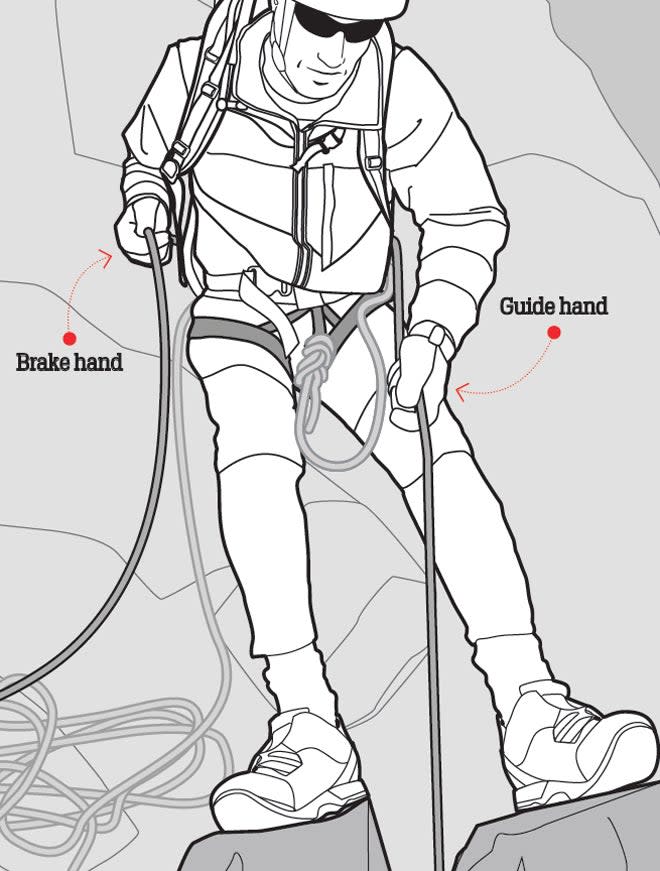“Old” Guy Thought A Hip Belay Was Fine
This article originally appeared on Climbing
Two climbers were on After Seven (5.8) in Yosemite. The leader started climbing, but the belayer was talking to some girls. When he was 15 feet up, the belayer sauntered over and put the rope around his back. He was attempting to hip belay, but he wasn't braced against anything. My friend and I asked, "Why are you hip belaying?" He shot back, "Because we're old!" They were no more than 35. The kicker: he had an ATC hanging from his harness.--Billy SLC, via Climbing.com
LESSON: Hey, 35 isn't old! It's definitely not old enough to use hip belays by default, since the first belay devices came out in 1970. A hip belay can work, but you need to practice it and you’d be surprised to find how difficult and painful it really is to hold someone with the rope only wrapped around your waist. The hip belay is a good technique to know for rolling but still "no-fall zone" alpine terrain. A good hip belay is all about stance; your legs absorb a fall's impact. If you're standing casually, a fall would pull you out of your stance and rip the rope from your hands. Sit down, brace your feet against something sturdy, straighten your legs, and prepare to be pulled toward the climber. (Learn more in our guide to hip belays)

Last weekend, I was climbing on a large ledge above the road in Boulder Canyon. A new trad leader started up an easy route. The belayer was not anchored, which is forgivable since it's quite a large ledge. However, after the leader placed his first piece, he started bounce-testing it!--Abram Herman, via Climbing.com
LESSON: Leave the bounce-testing to aid climbers unless you down-climb to a safe place first. If the pro failed and the climber were lucky, he'd deck on the ledge. If not, he'd fall past the ledge, yank his belayer off with him, and they'd both plummet down onto the street. If there's any chance a fall will be bad news for your belayer, then he should be anchored. It's certainly good to test pro and lock it in place with a solid yank, but don't put all your weight on it. You don't want to rip it--and yourself--off the wall.
A party on Black Magic (5.10) in Wadi Rum, Jordan, was recently rescued. They either misread the topo or lost count of the pitches. They thought they were at the base of the last pitch, an easy slab, when, in fact, they were at the base of the second-to-last pitch, a difficult corner. They left their ropes at the rappel station and soloed the pitch, intending to return after the top to rap off. Instead, they found they couldn't reverse it and were stranded 800 feet above the ground.--Hanina Kali, via Climbing.com
LESSON: Poor preparation can be just as dangerous as bad practices. Black Magic is a 12-pitch trad route--a serious undertaking. The climb should be planned before leaving the ground. Keep track of the pitches and bring the guidebook (or photocopied page) up the wall in case you find yourself unsure. It's also a good idea to carry emergency bivy gear on big climbs. You never know when you'll be benighted. A puffy, emergency blanket, lighter, hand warmers, and some GU packets will make an uncomfortable night on the wall less uncomfortable.
Want more? Check out these stories of near misses.
Three Unbelievable Tales Of Close Calls
What's Wrong With This Anchor?
This Guide Could Have Killed Them Both
Thought Home Depot Rope Was Fine For Climbing
Leader Decks When Experienced Climber Bungles the Belay
Saw Through Someone Else's Rope
Belayed With Hands Only--No Device!
Smoke Brick Weed and Go Climbing
Belay With a Knife In Your Hand
Don't Let a Clueless Dad Take a Kid Climbing
She Got Frustrated and Untied--On Lead
For exclusive access to all of our fitness, gear, adventure, and travel stories, plus discounts on trips, events, and gear, sign up for Outside+ today.